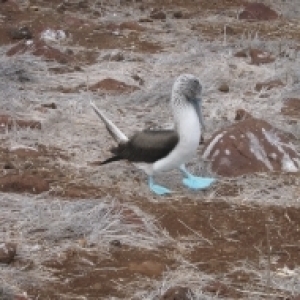In velvet -
The annual growth cycle of antlers starts in spring with the rapid development of a soft cartilaginous core from each of the two pedicles. This core is covered with a layer of connective tissue, then skin with a dense covering of fine hair, and the whole antler is well supplied with blood vessels and nerves. Velvet antler is very sensitive during this growth phase, and the male deer are protective of it and non-aggressive. Velvet antlers grow very rapidly, at a rate of up to 2 cm a day. As growth occurs, cartilage is gradually replaced by bone by a process of calcification. When growth is complete, the antler 'hardens' or calcifies completely, the blood vessels at the junction between the pedicle and the antler close off, and the skin, nerves and connective tissue dry, shrivel and flake off. The bony cores remain as hard antler ready for the 'rutting' season in autumn, when the stags are aggressive and combative as they compete for hinds. At the end of the rutting season, in early spring, the pedicle-antler junction weakens and the antlers are cast naturally.
Deer velvet is a unique structure, because it is the only organised mammalian tissue that regrows completely, and it does so every year. Moreover it grows extraordinarily rapidly, and the rapid growth is likely to be regulated by pharmacodynamic substances that are either unique or that can be found in other tissues but are at particularly high concentrations in deer velvet. In Asia, the unique nature of deer velvet has no doubt contributed to its reputation as a powerful remedy.

Comments
Sign in or get an account to comment.


